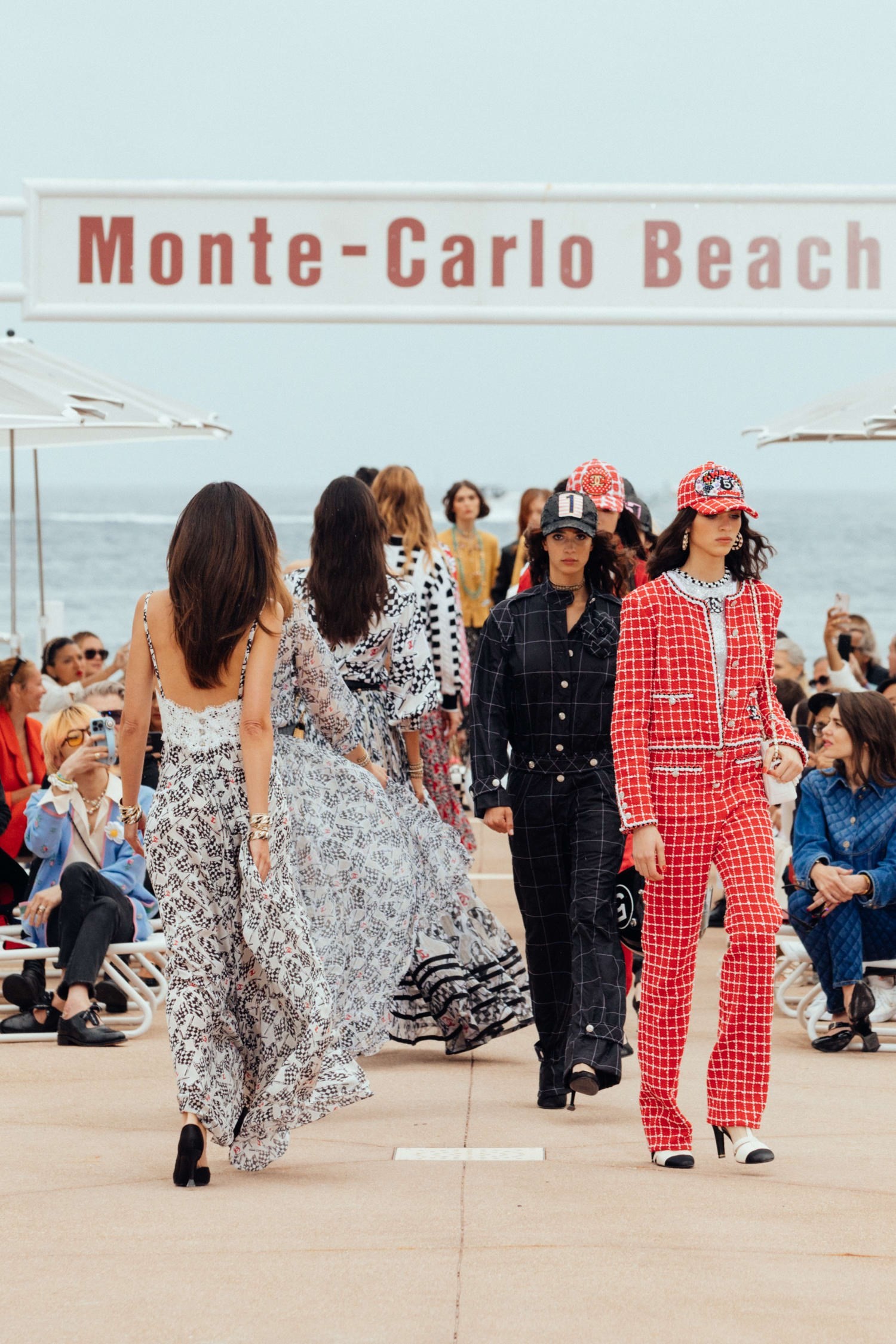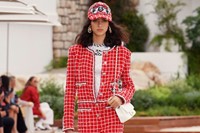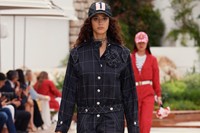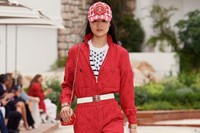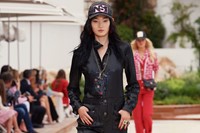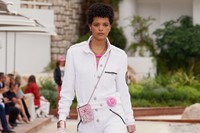Perhaps no fashion house is as well-versed in its iconography and patrimony as Chanel – because few fashion houses have histories as rich and multi-faceted. Almost anything can be coupled to the Chanel name, given the breadth of Gabrielle Chanel’s passions and innovations – even a rocket ship blasting off connects, somehow, to the second renaissance of her neat tweed suits during the Space Race of the 1960s and her own relentlessly forward-looking fashion ethos. That was mirrored by Karl Lagerfeld, who inherited her mantle in 1983 and reinvented Chanel for postmodern times.
And, today, it is the dual legacy of Gabrielle and Karl that Virginie Viard refracts through her eye. Her latest Chanel Cruise collection, presented on Monte Carlo Beach, is an apt example. Chanel herself had a villa, La Pausa, in Roquebrune-Cap-Martin, just by the tiny principality of Monaco. Lagerfeld himself occupied a Belle Epoque villa perched on a Monagesque hill – it’s called La Vigie or ‘The Lookout’, reflective of its imposing altitude, expansive views and, oddly, of Lagerfeld’s all-seeing and consuming design eye. He spent summers there through the 80s and 90s, memorably photographing Linda Evangelista and Christy Turlington in sequinned wetsuit-Chanel suit hybrids on the property’s curved Juliet balconies.
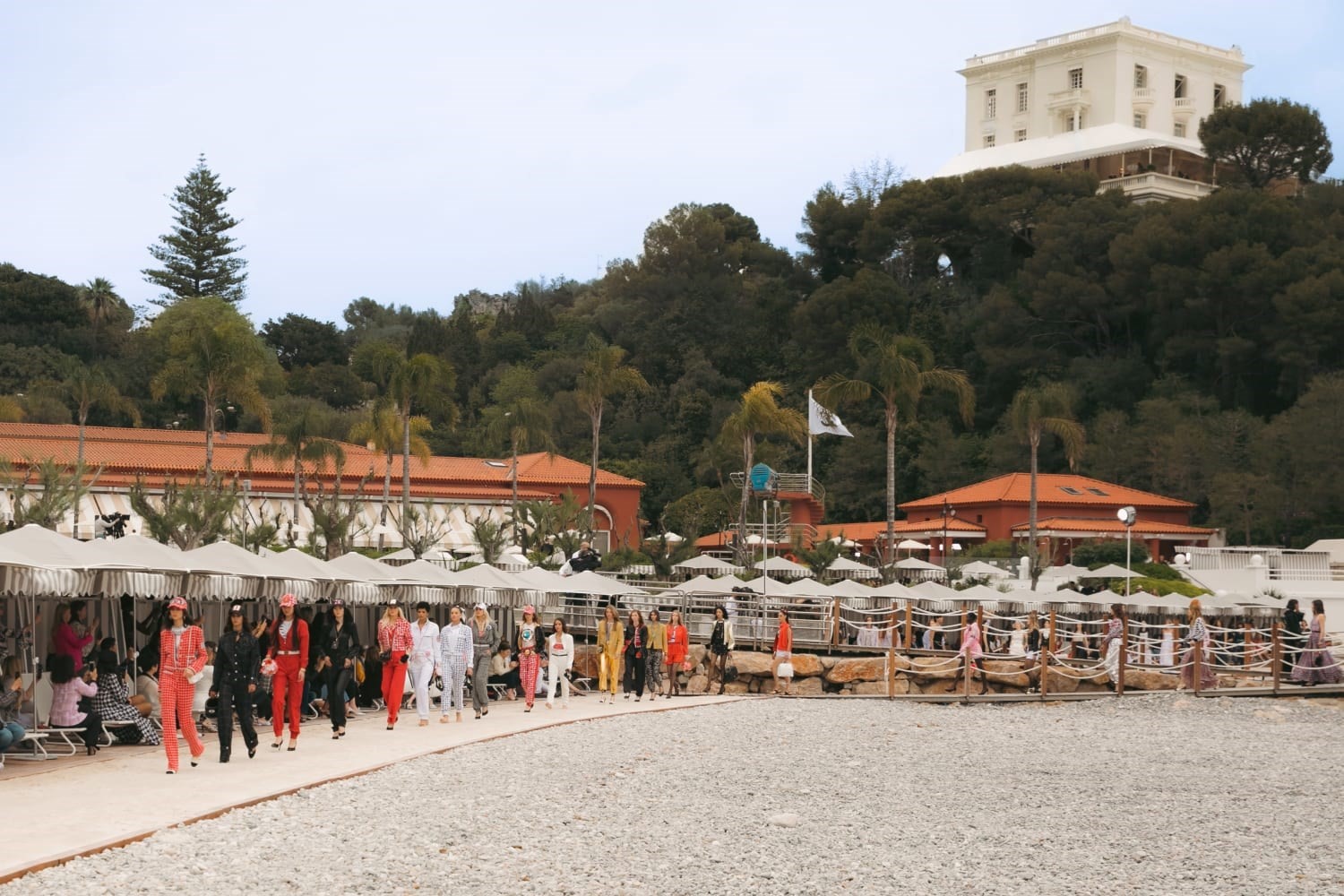
Viard presented her collection under the watch of La Vigie – the squared, creamy villa studded the landscape as her models wound their way past beach tents and along a pontoon at the Monte Carlo Beach hotel. “To me, Monaco is a matter of feelings above all. That’s Karl, Caroline, Charlotte,” said Viard. The latter two – Caroline, Princess of Hanover and her daughter Charlotte Casiraghi – were guests of honour at the show. The collection itself was a tribute to Monaco in the popular imagination – swimsuits galore, worn with high heels and sheer black tights for a night dancing at Jimmy’s rather than the beach, perhaps; the Grand Prix reflected in prints of checkered flags, pit-stop jumpsuits in bouclé tweeds, and covetable double-C logged helmets (sadly, not for sale). There was a witty riff on Monte Carlo’s famous casinos in the form of a slot-machine minaudière; shoes were snub-toed satin court shoes, resembling the pointe slippers of Les Ballets de Monte-Carlo.
And, of course, all roads lead back to Chanel. Those jumpsuits were utilitarian, practical, tied to the philosophy Chanel established the house with in 1910. She presented her first clothes not in Monte Carlo but in Deauville – yet they were beach clothes, easy separates geared to free movement, sold beside the sea – just as these were, visually, sold to us. There were black satin beach pyjamas that referenced Chanel originals from 1919. And a sequence of shirt dresses with high collars was a respectful echo of Lagerfeld’s personal attire. His spirit was present too in the tangle of chains and beads, accessories, playful bijoux, a glorious mish-mash of pieces overloaded in the manner of his early 90s work, his collections inspired by rappers and hip-hop, by mingling Chanel tweed with denim, by ripping off the rip-off Chanel he found on New York’s Canal Street, making hilariously real versions of fake Chanel-branded Y-fronts. All of that is resonating with generations not even alive then for its joyful evocation of fashion at its most flamboyant and escapist.
After the show, up in La Vigie, Chanel held a dinner on a glassed-in terrace. And up in Karl Lagerfeld’s former bedrooms and studies was an exhibition of some of the campaigns captured in Monaco: Linda and Christy glistening in wet-look sequins; Amber Valetta in a billowing chiffon little black dress; Claudia Schiffer emerging from the bay below the Pointe de la Vieille, draped in ping pong-sized pearls, a Monaco coastguard helicopter chopping overhead. They still seem vibrant and glamorous today – still alive. “Monaco is inherent to the history of Chanel,” said Viard. “We have lived so many happy moments there.”
